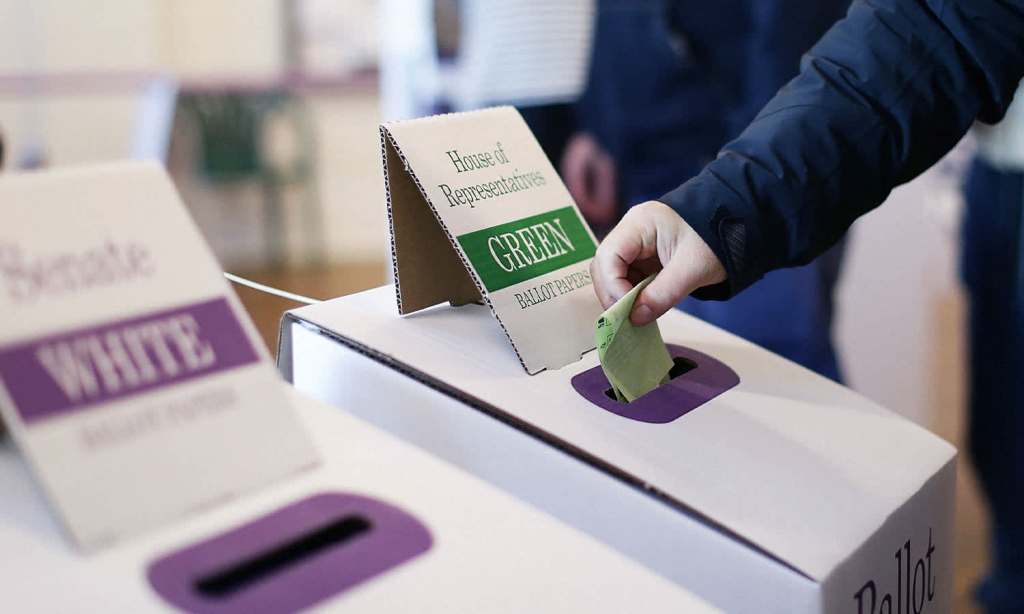On election day, some exhausted Australian Electoral Commission staffer donning a purple shirt and a weary smile will shove two very important papers into your hand.
The first is a small, A5-size paper, asking you to vote for who you’d like to represent you at the Federal level, in the House of Representatives.
Part of that member’s job is to listen to the constituents that live within their electoral boundary (usually around 100,000 people) and take those issues to Canberra. Federal Members of Parliament are also responsible for things like defence and foreign affairs, social services, national emissions targets, and immigration, and they financially support a number of state areas.
The second paper is a gigantic sheet that could have solved the great toilet paper crisis of 2021, asking you to vote for who you’d like to represent you at the State level, in the Senate.
Each state has 12 Senate positions, and they serve for six-year terms. You’ll only ever be voting for half of them at one time (you’ll vote for the other half at the next election). State MPs are responsible for things like schools, hospitals, the environment, police, and public transport.
Confused already? You’re not alone. Most Aussies have no idea how this stuff works and it’s no wonder. When do we actually get taught this stuff?
Voting for the House of Representatives (the Small Paper)
This is a list of people, from major parties, micro-parties, and independents, who are chomping at the bit to be your local Federal representative.
You need to number everyone on this piece of paper in order for your vote to be valid. If there are 7 candidates listed, your number 1 is the person you want to represent you while your number 7 is the person you least want to represent you. So what happens to those you number 2 and 3 and 4?
Long into the evening, hundreds of people around the country will manually be counting votes. Tick, tick, tick. The first person to get to more than 50% of the vote, wins. But, if there are 7 candidates running for one seat, rarely does anyone get more than 50% of the vote. So how do they decide the winner? Preferences.
The person or party that gets the least amount of votes in the first count, gets knocked out. Anyone who voted 1 for that person or party, their number 2 vote now becomes their number 1. If their number 2 vote gets knocked out, then their number 3 vote becomes their number 1. On and on it goes until we have a winner. What a fun game!
Because of this, you need to consider where your numbers go. If your top three votes are for micro-parties, in most seats you can expect them to be knocked out early. So consider the order you put everyone in.
A lot of the major parties will be handing out How to Vote cards at polling booths. This gives you a suggested order based on the party’s values, and the relationships they have with other candidates. This can be a helpful guide, but your vote is still yours. You never have to follow the How to Vote card.
Voting for the Senate (the Huge White Paper)
This one is more complex. Here’s what you need to know: you can either vote above or below the line.
Above the line
If you’re voting above the line, you’re voting for parties. You need to number at least six boxes from 1 to 6.
Voting above the line means you hand over your candidate preferences to the party. This means that if you Vote 1 for X party, your vote will go to their candidates in the order they’ve allocated. If your number 2 vote is for Y party, your vote will be directed to the candidates in the order they’ve allocated and so on and so forth.
Below the line
If you’re voting below the line, you’re voting for individuals. You need to number at least 12 boxes from 1 to 12.
This is great if you want a mix of candidates in the Senate. If you want 4 from one party, an independent or two, and some from a micro, this is the way to do it, but research on each candidate is crucial.
Now that the election has been called, candidates will have to formally nominate themselves to run. They’ll need 100 signatures from people registered to vote in their electorate in order to submit an application.
Only once this is done, will we know who is formally running in each seat (and that info will be on the AEC website!). Here are some helpful resources to lurk beforehand:
ABC: the ABC has a comprehensive list of the candidates that are running according to their public presence. We can assume that almost all who are campaigning now, will successfully nominate once the election has been called.
They Vote for You: this website shows you where your current MP has voted in the past on various issues that matter to you.
Open Politics: This platform collates the private interests of sitting MPs according to what they have formally declared. Sometimes, no declarations are more concerning than an abundance. It’s worth having a look.
Fail to vote properly and your vote means nothing. Don’t be that guy. Make your vote mean something this election. For more information, and to check that you’re registered (and at the right address!) visit the AEC.
Ruby Claire is the Director of Incredible Communications and Campaign Manager for independent candidate Georgia Steele. She writes regularly for We Are Explorers and has stories in Crikey and SBS The Feed.
Read more stories from The Latch and subscribe to our email newsletter.







